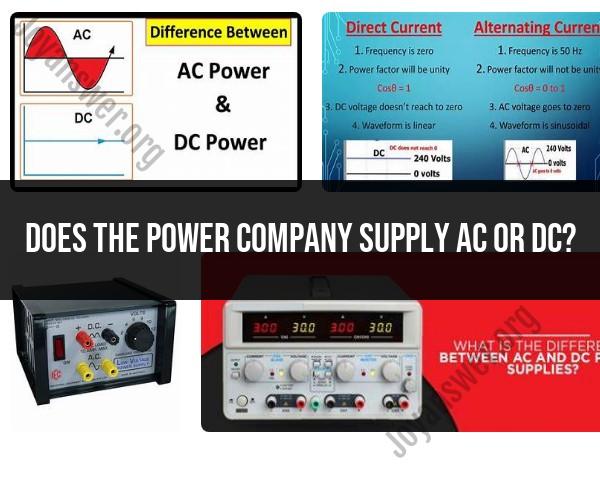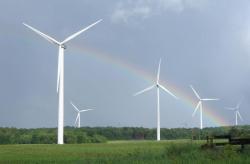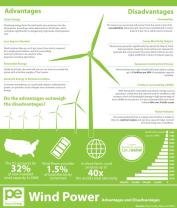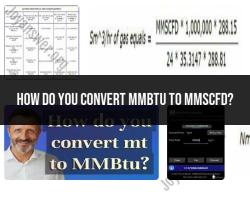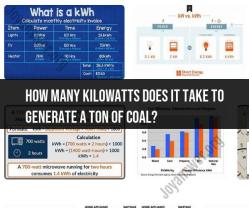Does the power company supply AC or DC?
Power companies predominantly supply electrical power in the form of alternating current (AC). The choice of AC over direct current (DC) for power distribution has historical and technical reasons.
Historical Context:
Nikola Tesla and Thomas Edison:
- In the late 19th century, there was a fierce competition between Nikola Tesla and Thomas Edison regarding the standard for electrical power distribution. Edison advocated for direct current (DC), while Tesla championed alternating current (AC).
Advantages of AC:
- AC has several technical advantages over DC for long-distance power transmission. One significant advantage is the ability to use transformers to change the voltage of the electricity, making it more practical to transmit power over long distances with reduced energy losses.
Technical Reasons:
Voltage Transformation:
- AC voltage can be easily transformed using transformers. This allows for stepping up the voltage for efficient long-distance transmission and stepping it down for safe distribution to homes and businesses.
Power Losses:
- The power loss in electrical transmission lines is proportional to the square of the current and inversely proportional to the voltage. By using transformers to increase the voltage for transmission, power companies can reduce the current, thereby minimizing energy losses.
Efficiency:
- AC power transmission is more efficient over long distances compared to DC, making it the preferred choice for the power grid.
Generation and Distribution:
- Many power generation methods, such as those using turbines, naturally produce AC. Converting AC to DC and then back to AC for distribution would introduce unnecessary inefficiencies.
AC/DC Conversion:
While power companies primarily generate and distribute power as AC, there are instances where DC comes into play:
HVDC (High Voltage Direct Current) Transmission:
- In some cases, especially for very long-distance transmission or interconnecting power grids, high voltage DC transmission lines may be used. HVDC allows for efficient transmission over extremely long distances.
DC for Specific Applications:
- Some electronic devices and certain industries may require direct current. In such cases, AC from the power grid is converted to DC using rectifiers or inverters.
In summary, power companies typically supply electrical power as alternating current (AC) because of its technical advantages, historical context, and efficiency in power transmission and distribution. However, with advancements in technology, there are specific use cases where high voltage direct current (HVDC) transmission or local DC distribution may be employed.
The power company supplies alternating current (AC) electricity to homes and businesses. This is because AC is more efficient to transmit over long distances than direct current (DC). AC is also easier to step up and down in voltage, which is necessary for power transmission and distribution.
Here is a table that summarizes the differences between AC and DC electricity:
| Feature | AC | DC |
|---|---|---|
| Direction of current | Flow of electrons periodically reverses direction | Flow of electrons is always in the same direction |
| Voltage | Can be easily stepped up or down | Cannot be easily stepped up or down |
| Efficiency of transmission | More efficient over long distances | Less efficient over long distances |
| Common uses | Power transmission and distribution, household appliances, industrial motors | Batteries, electronic devices, electrochemical processes |
